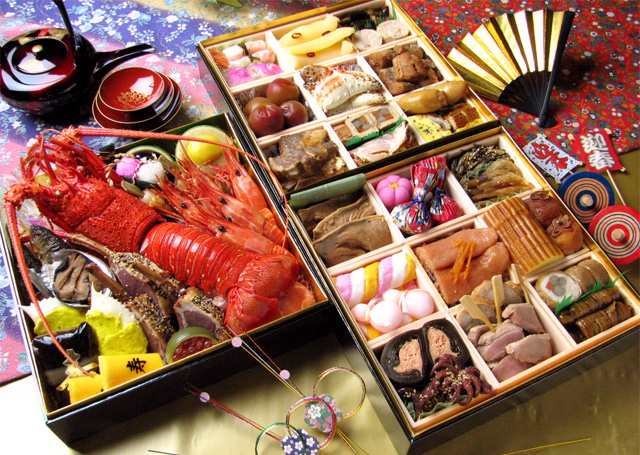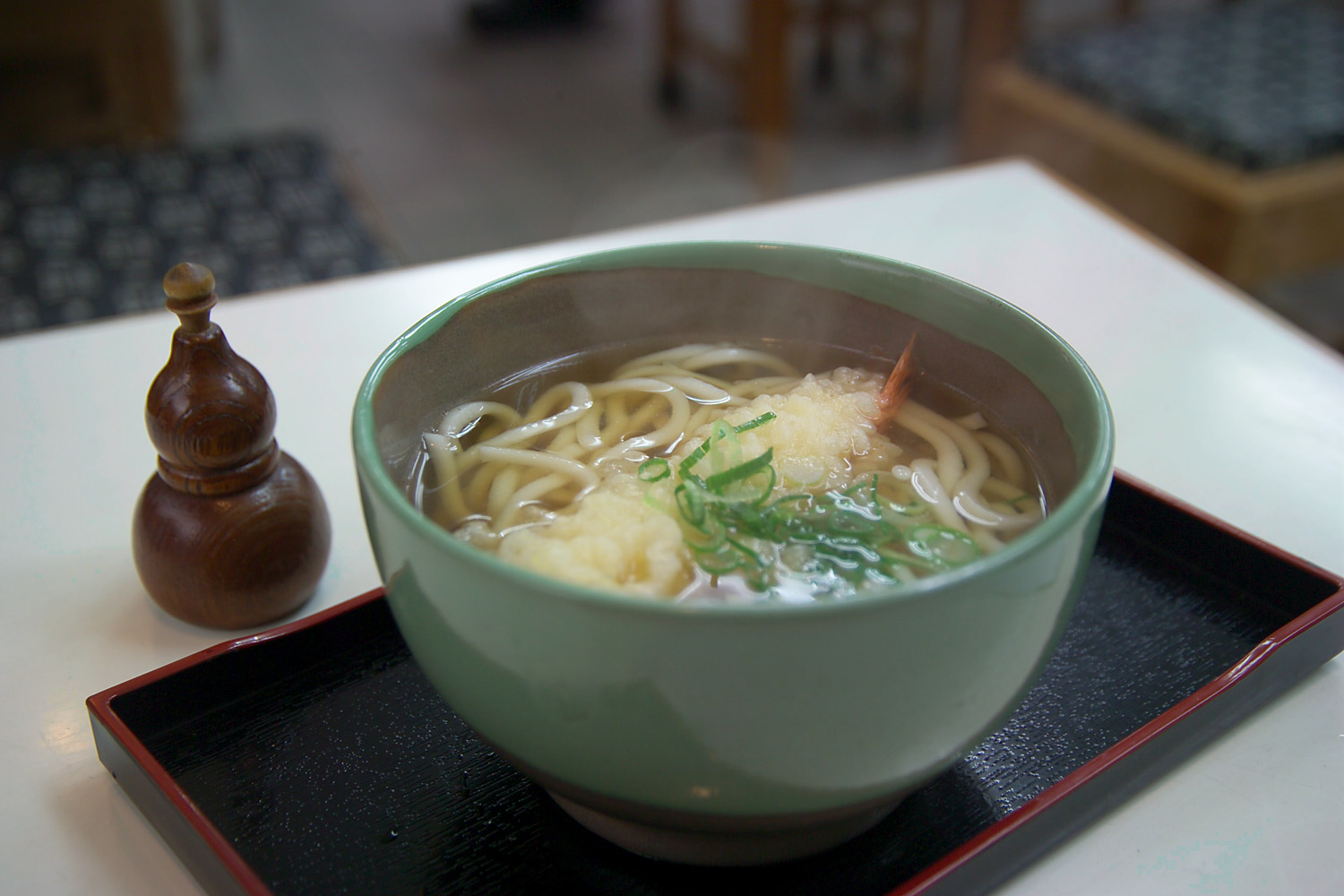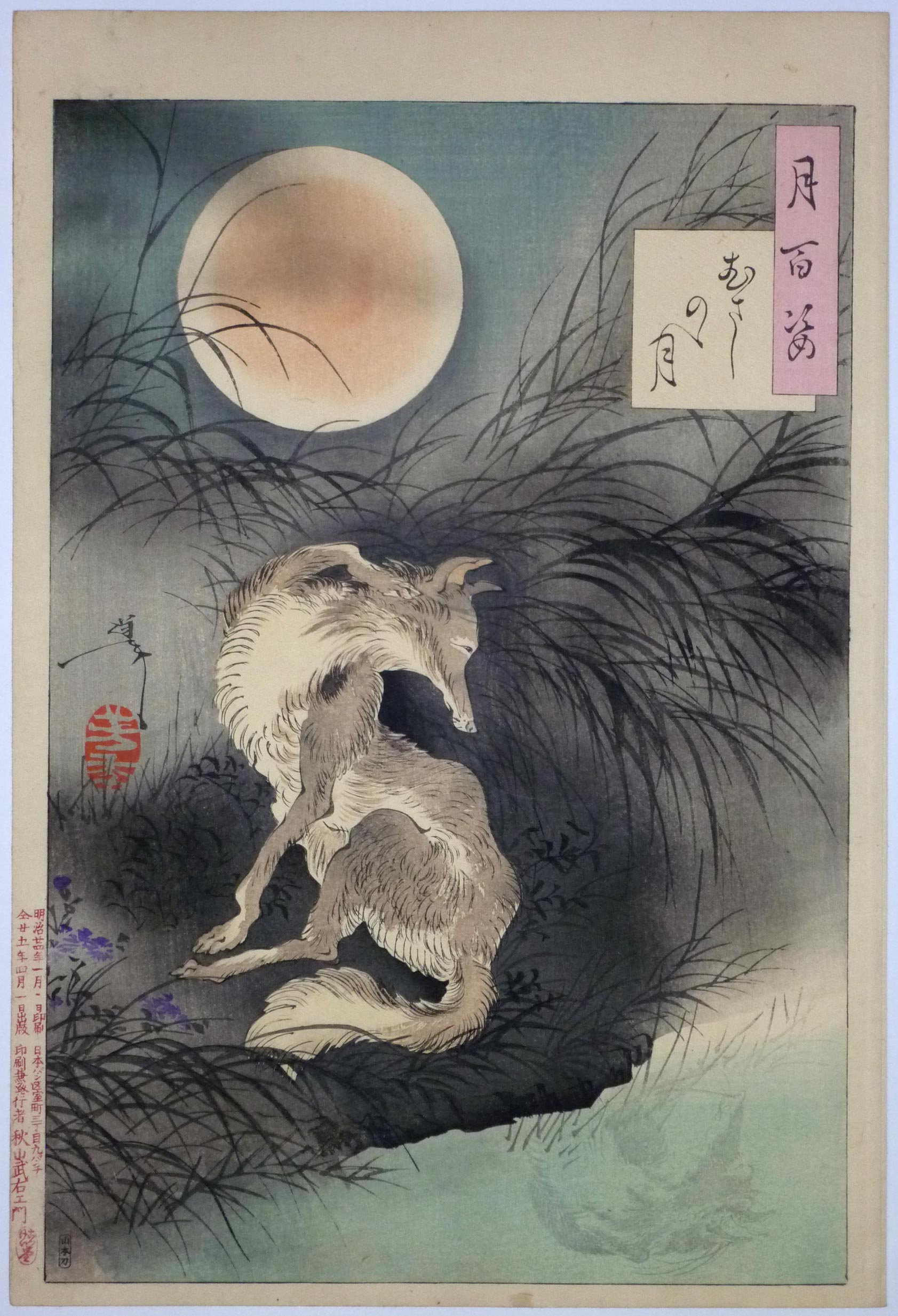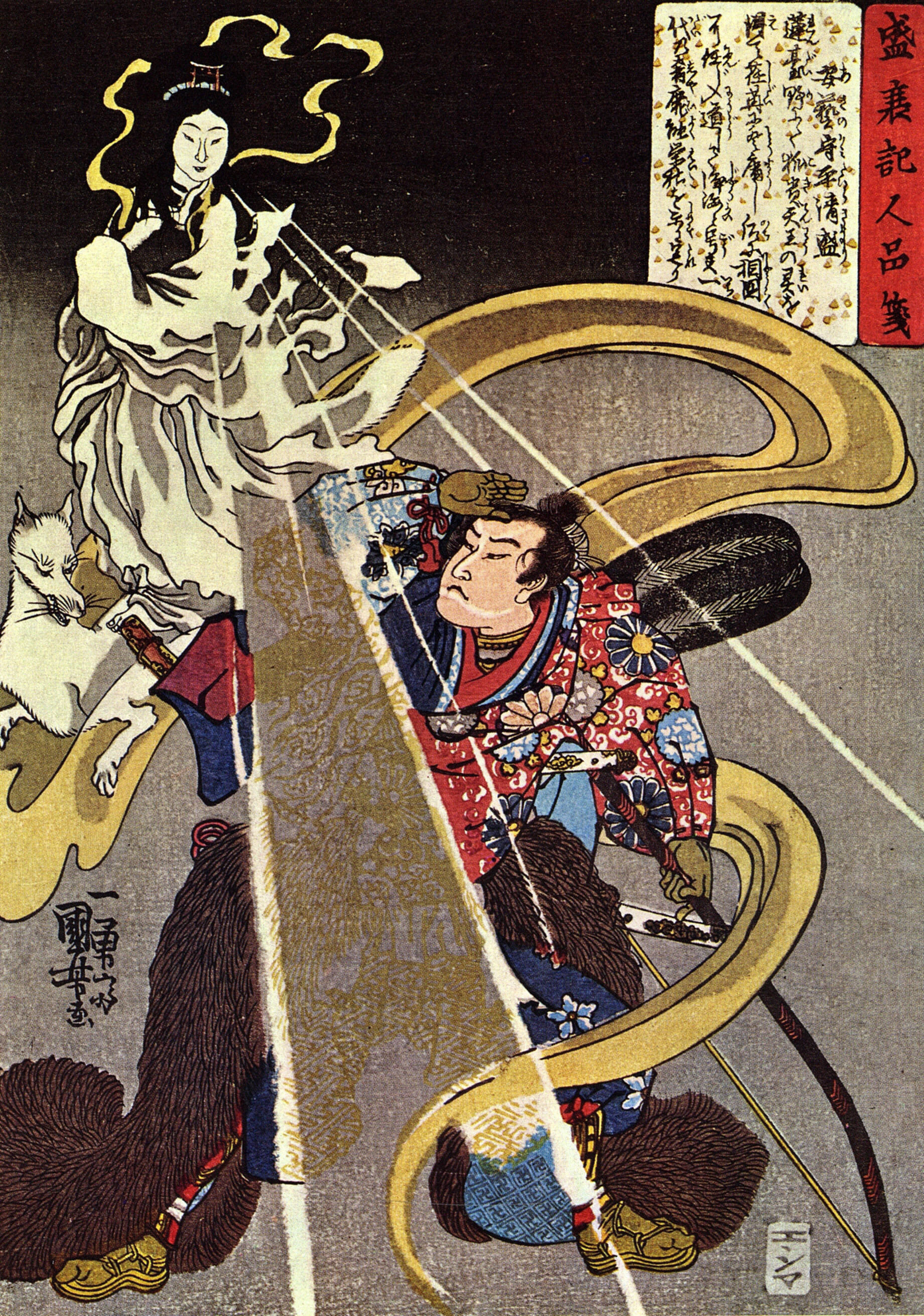|
Aburaage
is a Japanese food product made from tofu. Thin slices of tofu are deep-fried, and the product can then be split open to form pouches. is often used to wrap , and it is added to miso soup. It is also added to udon noodle dishes, which are called because of legends that foxes () like deep-fried tofu. can also be stuffed, e.g. with , before frying again. There is a thicker variety known as or . Gallery Sukeroku-zushi of Daily Yamazaki.jpg, '' Inarizushi'' (bottom) Kitsune udon of Nakau.jpg, '' Kitsune udon'' Nakao's Toyokawa Inari Udon (2015-05-10) 2.jpg, '' Inari udon'' きんちゃく (37173340651).jpg, ''Kinchaku'', stuffed tofu pouch in soup Tochio-aburage.jpg, With '' katsuobushi'' flakes Atsuage.jpg, ''Atsu-age'', a thicker variant See also * Tofu skin Tofu skin, yuba, beancurd skin, beancurd sheet, or beancurd robes is a food item made from soybeans. During the boiling of soy milk, in an open shallow pan, a film or skin composed primarily of a soy protein-lip ... [...More Info...] [...Related Items...] OR: [Wikipedia] [Google] [Baidu] |
Cuisine Of Japan
Japanese cuisine encompasses the regional and traditional foods of Japan, which have developed through centuries of political, economic, and social changes. The traditional cuisine of Japan ( Japanese: ) is based on rice with miso soup and other dishes with an emphasis on seasonal ingredients. Side dishes often consist of fish, pickled vegetables, tamagoyaki, and vegetables cooked in broth. Common seafood is often grilled, but it is also sometimes served raw as sashimi or as sushi. Seafood and vegetables are also deep-fried in a light batter, as '. Apart from rice, a staple includes noodles, such as soba and udon. Japan also has many simmered dishes, such as fish products in broth called , or beef in and . Historically influenced by Chinese cuisine, Japanese cuisine has also opened up to influence from Western cuisines in the modern era. Dishes inspired by foreign food—in particular Chinese food—like ramen and , as well as foods like spaghetti, curry and hamburgers, have ... [...More Info...] [...Related Items...] OR: [Wikipedia] [Google] [Baidu] |
Tofu
or bean curd is a food prepared by Coagulation (milk), coagulating soy milk and then pressing the resulting curds into solid white blocks of varying softness: ''silken'', ''soft'', ''firm'', and ''extra (or super) firm''. It originated in China and has been consumed in the country for over 2,000 years. Tofu is a traditional component of many East Asian cuisine, East Asian and Southeast Asian cuisine, Southeast Asian cuisines; in modern Western cooking, it is often used as a Meat alternative, meat substitute. Nutritionally, tofu is low in calories, while containing a relatively large amount of protein. It is a high and reliable source of iron, and can have a high calcium or magnesium content depending on the Flocculation, coagulants (e.g. calcium chloride, calcium sulphate, magnesium sulphate) used in manufacturing. Cultivation of tofu, as a protein-rich food source, has one of the lowest needs for land use (1.3 m²/ 1000 kcal) and emits some of the lowest amount of greenhouse ... [...More Info...] [...Related Items...] OR: [Wikipedia] [Google] [Baidu] |
Udon
Udon ( or ) is a thick noodle made from wheat flour, used in Japanese cuisine. There are a variety of ways it is prepared and served. Its simplest form is in a soup as with a mild broth called made from dashi, soy sauce, and mirin. It is usually topped with thinly chopped scallions. Other common toppings include prawn tempura, (mixed tempura fritter), (sweet, deep-fried tofu pouches), (sliced fish cake), and spice added to taste. Standard broth differs by region. Dark soy sauce is added in eastern Japan, while light soy sauce is added in the west. Instant noodles are often sold in two (or more) versions accordingly. More unusual variants include stir-fried and curry udon made with Japanese curry. It is often used in or Japanese hot pot. Dishes Udon noodles are boiled in a pot of hot water. Depending on the type of udon, the way it is served is different as well. Udon noodles are usually served chilled in the summer and hot in the winter. In the Edo period, the thicker ... [...More Info...] [...Related Items...] OR: [Wikipedia] [Google] [Baidu] |
Tofu
or bean curd is a food prepared by Coagulation (milk), coagulating soy milk and then pressing the resulting curds into solid white blocks of varying softness: ''silken'', ''soft'', ''firm'', and ''extra (or super) firm''. It originated in China and has been consumed in the country for over 2,000 years. Tofu is a traditional component of many East Asian cuisine, East Asian and Southeast Asian cuisine, Southeast Asian cuisines; in modern Western cooking, it is often used as a Meat alternative, meat substitute. Nutritionally, tofu is low in calories, while containing a relatively large amount of protein. It is a high and reliable source of iron, and can have a high calcium or magnesium content depending on the Flocculation, coagulants (e.g. calcium chloride, calcium sulphate, magnesium sulphate) used in manufacturing. Cultivation of tofu, as a protein-rich food source, has one of the lowest needs for land use (1.3 m²/ 1000 kcal) and emits some of the lowest amount of greenhouse ... [...More Info...] [...Related Items...] OR: [Wikipedia] [Google] [Baidu] |
Japan
Japan is an island country in East Asia. Located in the Pacific Ocean off the northeast coast of the Asia, Asian mainland, it is bordered on the west by the Sea of Japan and extends from the Sea of Okhotsk in the north to the East China Sea in the south. The Japanese archipelago consists of four major islands—Hokkaido, Honshu, Shikoku, and Kyushu—and List of islands of Japan, thousands of smaller islands, covering . Japan has a population of over 123 million as of 2025, making it the List of countries and dependencies by population, eleventh-most populous country. The capital of Japan and List of cities in Japan, its largest city is Tokyo; the Greater Tokyo Area is the List of largest cities, largest metropolitan area in the world, with more than 37 million inhabitants as of 2024. Japan is divided into 47 Prefectures of Japan, administrative prefectures and List of regions of Japan, eight traditional regions. About three-quarters of Geography of Japan, the countr ... [...More Info...] [...Related Items...] OR: [Wikipedia] [Google] [Baidu] |
Kitsune
The , in popular Japanese tradition, are foxes or fox spirits that possess supernatural abilities such as shapeshifting, and capable of bewitching people. General overview , though literally a 'fox', becomes in folklore a ' fox spirit', or perhaps a type of . They are ascribed with intelligence and magical or supernatural powers, especially so with long-living foxes. The ''kitsune'' exhibit the ability of , or transforming its shape and appearance, like the '' tanuki'' as well as the ability to , i.e. beguile or bewitch; these terms are related to the generic term meaning "spectre" or "goblin". Another scholar ascribes the ''kitsune'' with being a "disorienting deity" (that makes the traveler lose his way) and such capabilities were also ascribed to badgers (actually '' tanuki'' or raccoon dog) and occasionally to cats (cf. '' bakeneko''). The archetypal method by which the ''kitsune'' tricks () humans is to lead them astray, or make them lose their way. The experiences ... [...More Info...] [...Related Items...] OR: [Wikipedia] [Google] [Baidu] |
Deep Fried Foods Of Japan
Deep or The Deep may refer to: Places United States * Deep Creek (Appomattox River tributary), Virginia * Deep Creek (Great Salt Lake), Idaho and Utah * Deep Creek (Mahantango Creek tributary), Pennsylvania * Deep Creek (Mojave River tributary), California * Deep Creek (Pine Creek tributary), Pennsylvania * Deep Creek (Soque River tributary), Georgia * Deep Creek (Texas), a tributary of the Colorado River * Deep Creek (Washington), a tributary of the Spokane River * Deep River (Indiana), a tributary of the Little Calumet River * Deep River (Iowa), a minor tributary of the English River * Deep River (North Carolina) * Deep River (Washington), a minor tributary of the Columbia River * Deep Voll Brook, New Jersey, also known as Deep Brook Elsewhere * Deep Creek (Bahamas) * Deep Creek (Melbourne, Victoria), Australia, a tributary of the Maribyrnong River * Deep River (Western Australia) People * Deep (given name) * Deep (rapper), Punjabi rapper from Houston, Texas * Ra ... [...More Info...] [...Related Items...] OR: [Wikipedia] [Google] [Baidu] |
Japanese Cuisine Terms
Japanese may refer to: * Something from or related to Japan, an island country in East Asia * Japanese language, spoken mainly in Japan * Japanese people, the ethnic group that identifies with Japan through ancestry or culture ** Japanese diaspora, Japanese emigrants and their descendants around the world * Japanese citizens, nationals of Japan under Japanese nationality law ** Foreign-born Japanese, naturalized citizens of Japan * Japanese writing system, consisting of kanji and kana * Japanese cuisine, the food and food culture of Japan See also * List of Japanese people * * Japonica (other) * Japanese studies , sometimes known as Japanology in Europe, is a sub-field of area studies or East Asian studies involved in social sciences and humanities research on Japan. It incorporates fields such as the study of Japanese language, history, culture, litera ... {{disambiguation Language and nationality disambiguation pages ... [...More Info...] [...Related Items...] OR: [Wikipedia] [Google] [Baidu] |
Wheat Gluten (food)
Seitan (, ; ) is a food made from gluten, the main protein of wheat. It is also known as miànjīn ( zh, links=no, t=麵筋), fu (), milgogi (), wheat meat, gluten meat, or simply gluten. Wheat gluten is an alternative to soybean-based foods, such as tofu, which are sometimes used as a meat alternative. Some types of wheat gluten have a chewy or stringy texture that resembles meat more than other substitutes. Wheat gluten is often used instead of meat in Asian, vegetarian, vegan, Buddhist, and macrobiotic cuisines. Mock duck is a common use. Wheat gluten first appeared during the 6th century as an ingredient for Chinese noodles. It has historically been popular in the cuisines of China, Japan and other East and Southeast Asian nations. In Asia, it is commonly found on the menus of restaurants catering primarily to Buddhist customers who do not eat meat. Production Gluten is traditionally extracted from wheat flour. A dough is washed in water until most of the starch gra ... [...More Info...] [...Related Items...] OR: [Wikipedia] [Google] [Baidu] |
Katsuobushi
is simmered, smoked and fermented skipjack tuna (''Katsuwonus pelamis'', sometimes referred to as bonito). It is also known as bonito flakes or broadly as . Shaved ''katsuobushi'' and dried kelp—''kombu''—are the main ingredients of ''dashi'', a broth that forms the basis of many soups (such as miso) and sauces (such as ''soba no tsukejiru'') in Japanese cuisine. ''Katsuobushi''s distinct umami taste comes from its high inosinic acid content. Traditionally made ''katsuobushi'', known as ''karebushi'', is deliberately fermented with '' Aspergillus glaucus'' fungus in order to reduce moisture. ''Katsuobushi'' has also been shown to impart '' kokumi'' (a term translated as "heartiness"). Traditional production process The fish is beheaded, gutted, and filleted, with the fatty belly, which does not lend well to being preserved, trimmed off. The fillets are then arranged in a basket and simmered just below boiling for an hour to an hour and a half, depending on their si ... [...More Info...] [...Related Items...] OR: [Wikipedia] [Google] [Baidu] |
Inari Ōkami
, also called , is the Japanese ''kami'' of Red fox, foxes, Fertility (soil), fertility, rice, tea, sake, agriculture and Industrial sector, industry, and general prosperity and worldly success, and is one of the principal kami of Shinto. The name Inari can be literally translated into "rice-bearer". In earlier Japan, Inari was also the patron of swordsmiths and merchants. Genderfluid, Alternatingly-represented as male and/or female, Inari is sometimes seen as a collective of three or five individual ''kami''. Inari appears to have been worshipped since the founding of a shrine at Inari Mountain in 711 CE, although some scholars believe that worship started in the late 5th century. By the 16th century, Inari had become the patron of blacksmiths and the protector of warriors, and worship of Inari spread across Japan in the Edo period. Inari is a popular figure in both Shinto and Buddhism, Buddhist beliefs in Japan. More than one-third (40,000) of the Shinto shrines in Japan are ded ... [...More Info...] [...Related Items...] OR: [Wikipedia] [Google] [Baidu] |
Kitsune
The , in popular Japanese tradition, are foxes or fox spirits that possess supernatural abilities such as shapeshifting, and capable of bewitching people. General overview , though literally a 'fox', becomes in folklore a ' fox spirit', or perhaps a type of . They are ascribed with intelligence and magical or supernatural powers, especially so with long-living foxes. The ''kitsune'' exhibit the ability of , or transforming its shape and appearance, like the '' tanuki'' as well as the ability to , i.e. beguile or bewitch; these terms are related to the generic term meaning "spectre" or "goblin". Another scholar ascribes the ''kitsune'' with being a "disorienting deity" (that makes the traveler lose his way) and such capabilities were also ascribed to badgers (actually '' tanuki'' or raccoon dog) and occasionally to cats (cf. '' bakeneko''). The archetypal method by which the ''kitsune'' tricks () humans is to lead them astray, or make them lose their way. The experiences ... [...More Info...] [...Related Items...] OR: [Wikipedia] [Google] [Baidu] |






